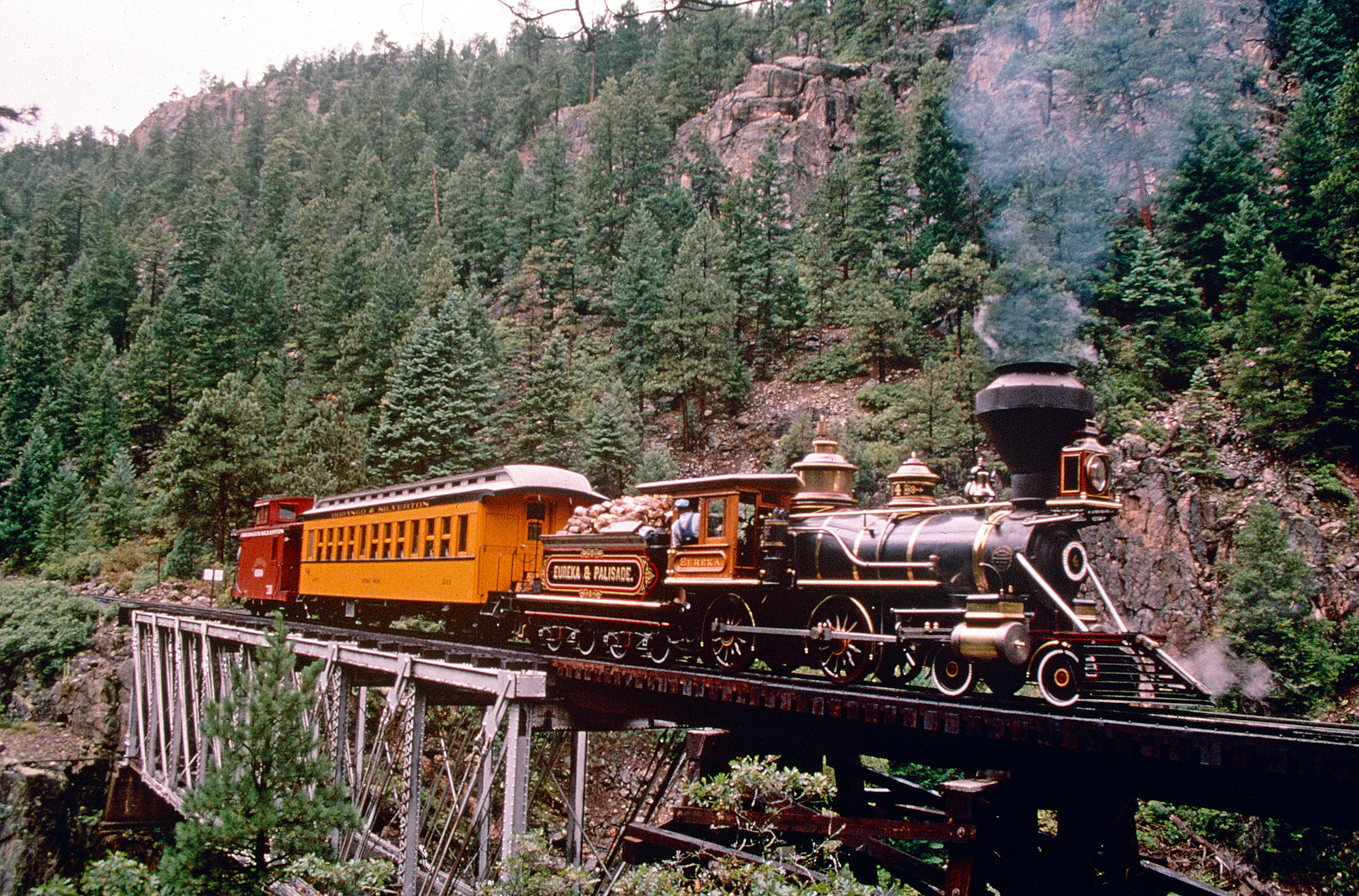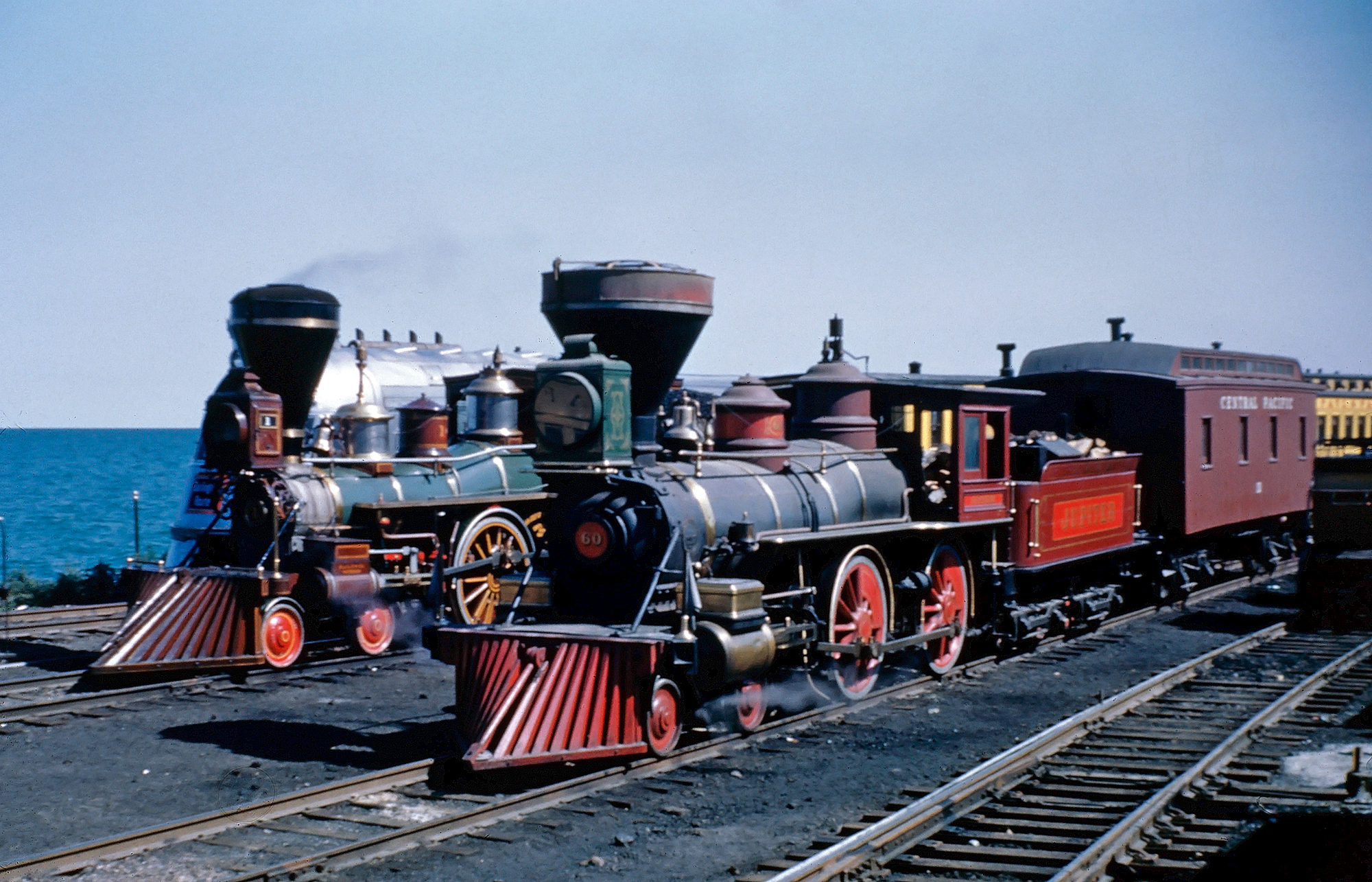4-4-0 "American" Locomotives
Last revised: April 12, 2024
By: Adam Burns
The 4-4-0 American steam locomotive unquestionably stands as a prime contributor to the United States' flourishing advancement in the latter half of the 19th century – a level of significance unparalleled by any other locomotive design before or after its inception.
Making its debut and undergoing subtle refinements, the 4-4-0 rapidly demonstrated its dominance over other initial wheel configurations by the 1850s, such as the 2-2-0 and 0-4-0. By the 1870s, this cutting-edge technology was found in over three-quarters of all in-service steam locomotives, firmly establishing its place as an 'American Type.'
The nation's railroad evolution, instrumental in shaping the great country we see today, was largely powered by the reliable 4-4-0s. Originating from a compact design, these locomotives grew in size and strength by the late 19th century to efficiently cater to the burgeoning freight and passenger demands.
Thanks to the vast numbers of ‘Americans’ produced over the years, these iconic machines have not entirely vanished from our sights. Even today, several 4-4-0s remain preserved in museums or bring delight to enthusiasts on tourist railroads worldwide – a lasting tribute to their monumental role in history.
 Eureka & Palisade 4-4-0 #4 leads a photo charter across the Pratt deck truss bridge over the Animas River on the Durango & Silverton in August, 1999. The historic, 3-foot gauge locomotive was built by the Baldwin Locomotive Works in July, 1875. It is privately owned and housed in Las Vegas, Nevada. Jerry Weisman photo. American-Rails.com collection.
Eureka & Palisade 4-4-0 #4 leads a photo charter across the Pratt deck truss bridge over the Animas River on the Durango & Silverton in August, 1999. The historic, 3-foot gauge locomotive was built by the Baldwin Locomotive Works in July, 1875. It is privately owned and housed in Las Vegas, Nevada. Jerry Weisman photo. American-Rails.com collection.The narrative of the iconic American Type steam locomotive harkens back to 1836, with credit bestowed on Henry Campbell for pioneering the 4-4-0 wheel arrangement. Preceding Campbell's groundbreaking invention, steam locomotives were noted not only for their limited horsepower but also for their unreliability - flaws attributable largely to the industry's nascent status.
The fledgling locomotive landscape was then dominated by models such as the Best Friend of Charleston (0-4-0) and the Stourbridge Lion (English 2-2-0), the John Bull (an early English 4-4-0), and the historically noteworthy Tom Thumb (a rudimentary 2-2-0 model recognized as the first American-built steam locomotive).
Campbell's innovative American Type catapulted the locomotive industry forward, bringing marked improvements in horsepower, tractive effort, and reliability. More importantly, it mapped out a new blueprint for future steam locomotives — with horizontally arranged boilers and smokestacks angled at ninety degrees to vent smoke and cinders efficiently.
The 4-4-0 design also enhanced crew safety, boasting a fully enclosed cab fitted to the rear of the boiler. In essence, the American Type paved the way, standardizing several steam locomotive design elements — from cowcatchers to front-mounted headlamps — which became staple features of future models.
 A replica of Central Pacific's 4-4-0 #60 ("Jupiter"), Great Northern 4-4-0 #1 ("William Crooks"), and Burlington's original "Pioneer Zephyr" pose together in a publicity photo, circa 1969. This scene appears to have been taken on the Great Salt Lake Causeway, probably to celebrate the centennial completion of the Transcontinental Railroad. American-Rails.com collection.
A replica of Central Pacific's 4-4-0 #60 ("Jupiter"), Great Northern 4-4-0 #1 ("William Crooks"), and Burlington's original "Pioneer Zephyr" pose together in a publicity photo, circa 1969. This scene appears to have been taken on the Great Salt Lake Causeway, probably to celebrate the centennial completion of the Transcontinental Railroad. American-Rails.com collection.The augmented power and tractive effort of the American locomotive led to the creation of larger, heavier freight and passenger cars, thereby increasing the economic scale of trains. This development also called for heavier rails to bear the increased loads.
While the 4-4-0 design was originally conceived by Henry Campbell, he was not the first to monetize its potential successfully. Campbell's initial design housed a rigid front truck, which struggled to negotiate rail curves, especially considering the rudimentary quality of track construction at the time.
However, Eastwick & Harrison Company recognized this design flaw, and is credited with introducing the much-needed swiveling front truck in their first completed locomotive, the Hercules, to the Beaver Meadow Railroad in 1837.
In the following years, the American Type experienced further enhancements, offering better traction, power, and an enlarged overall design, inclusive of increased boiler size.
Thus, the 4-4-0 design was the perfect solution to the railroad's needs in the latter half of the 19th century as they sought to build west and operate larger, heavier trains.
Despite Americans rapidly losing their appeal in the final decade of the 1800s to stronger loco contenders like the Ten-Wheelers (4-6-0) and Consolidations (2-8-0), their contribution to pioneering steam locomotive design and development remains unassailable - indeed, traces of the 4-4-0s can be found in service well into the 1940s.
Despite the emergence of more advanced locomotives, it’s fascinating to note that some railroads elected to retain their venerable 4-4-0s well into the 1940s and 1950s, usually serving as switchers or fulfilling secondary roles. Smaller short-line operations, in particular, found these stalwarts handy for everyday tasks right up until the twilight of the steam era.
Ultimately, the unrivaled practicality of the American Type was so significant that virtually every railroad – from sprawling networks to humble short lines – operating from the 1850s onwards, boasted at least one of these in their fleet.
This sentiment is backed by the innumerable units produced by a diverse array of manufacturers including household names like Rogers, Cooke, Norris, Stevens, and Portland as well as noted builders Baldwin, Lima, and Alco. The enduring prevalence of these locomotives stands as a testament to their unparalleled utility and timeless appeal.
In a testament to their enduring legacy, many American Types stand preserved today, with a select few continuing to thrill enthusiasts in operational service.
A standout among these functioning relics is the Baltimore & Ohio Railroad #25, the 'William Mason'. Lavishly restored to its original glory, this operational beauty is dressed in an elegant dark green livery, accentuated with opulent gold trim.
In the same operational league is the Central Pacific Railroad #60, widely known as 'Jupiter', whose classic livery of vivid red and blue, coupled with a black boiler and stack, remains a striking sight.
Not to be overlooked among the celebrated surviving 4-4-0s is the legendary 'General', a locomotive that played a pivotal role in the American Civil War. Revered for its historical significance, the 'General' holds a place of honor at the Southern Museum of Civil War and Locomotive History in Kennesaw, Georgia.
Other remarkable examples of surviving 4-4-0s include the fully operational Wilmington & Western #98, and Pennsylvania D16 #1223, a resident exhibit at the respected Railroad Museum of Pennsylvania at Strasburg.
Across state lines in Sacramento, California, the California State Railroad Museum hosts an impressive lineup of 4-4-0 locomotives. One of these brilliant exhibit stars is the 'Governor Stanford,' renowned for its instrumental role in the construction of the historical transcontinental railroad.
While these are some acclaimed examples, they represent just the tip of the iceberg in terms of surviving American locomotives. Besides those still thrilling spectators on the tracks, numerous 4-4-0s stand dignified in static exhibition, remaining silent yet powerful tributes to an era of pioneering innovation and industrial grit.
SteamLocomotive.com
Wes Barris's SteamLocomotive.com is simply the best web resource on the study of steam locomotives.
It is difficult to truly articulate just how much material can be found at this website.
It is quite staggering and a must visit!
